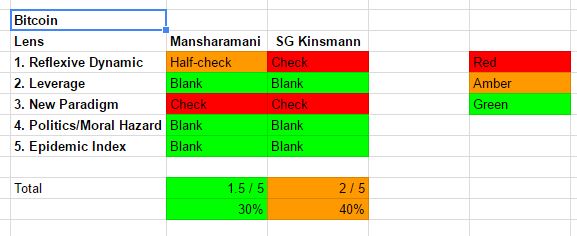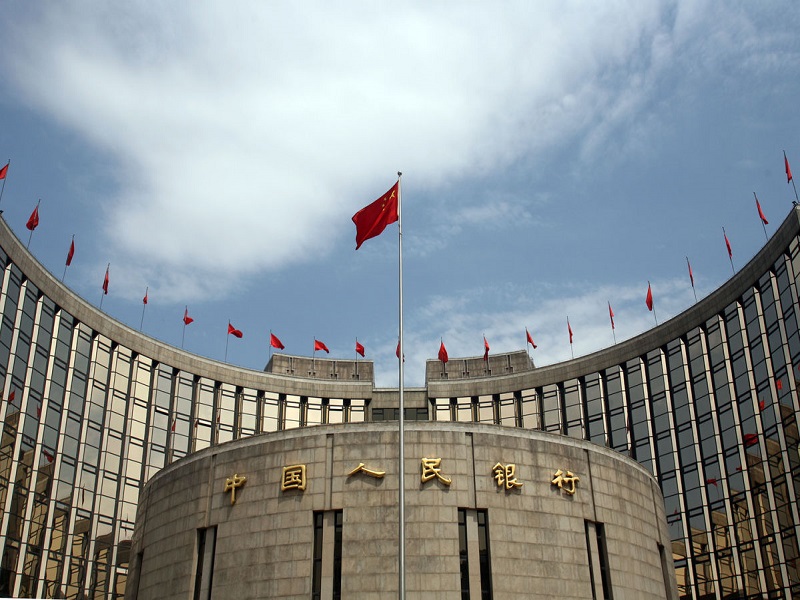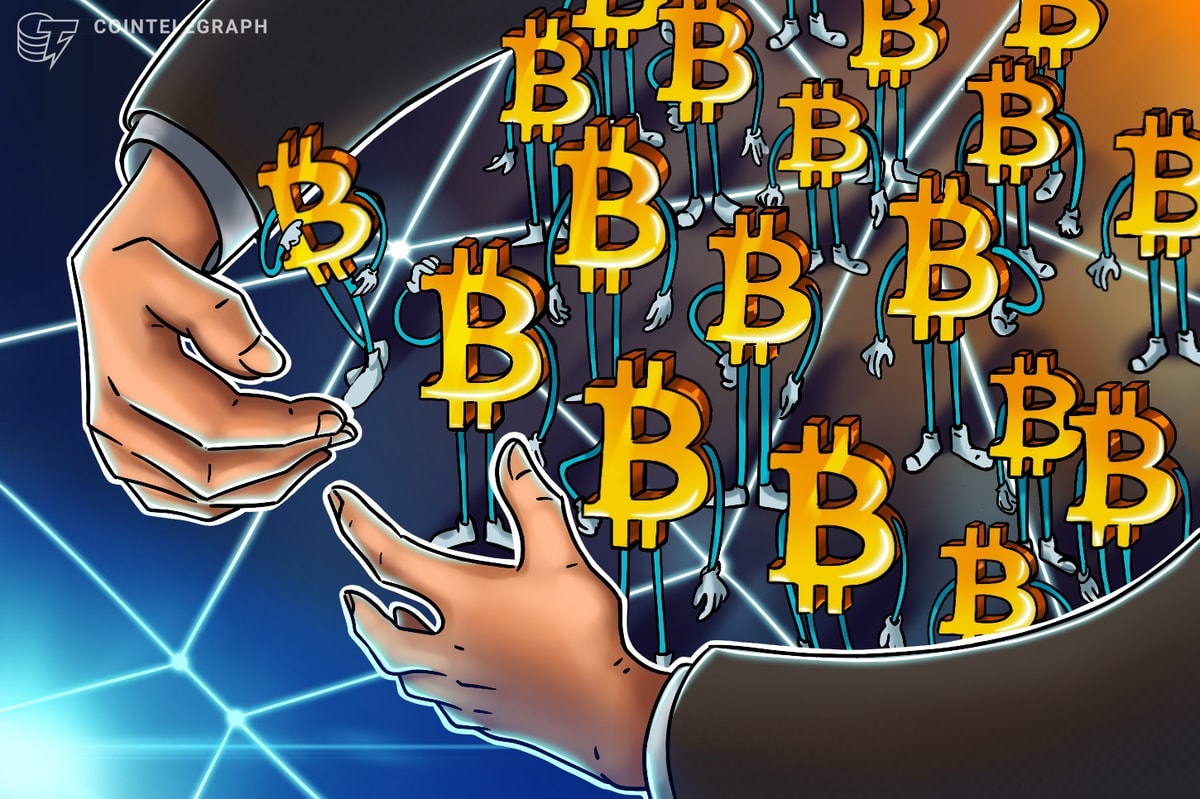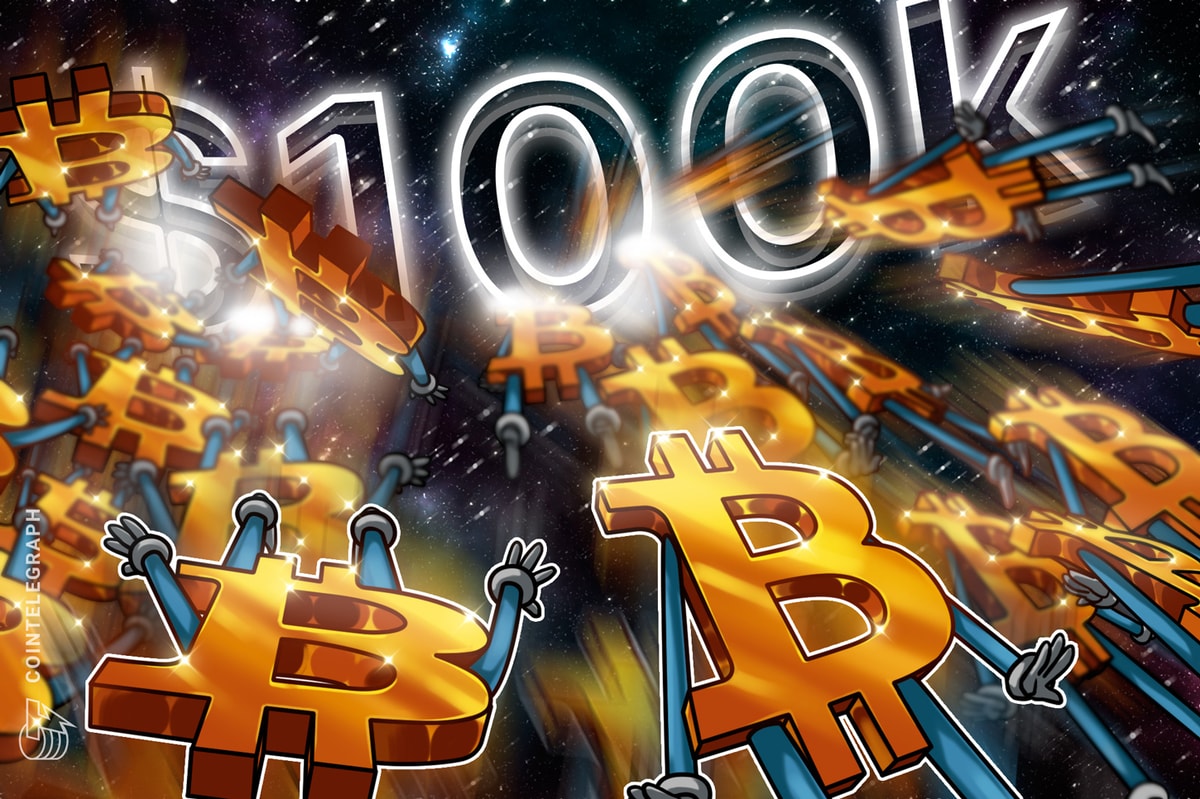Is There a Bitcoin Bubble That’s About to Pop?
In a recent article in LinkedIn he asks: Is there a bitcoin bubble about to burst?
He has developed a framework for spotting bubbles in his bestseller book, Bubbles & Busts. The approach is based on the application of five lenses and generates a probabilistic assessment of a forthcoming bust.
The book’s central thesis is that it is only by adopting a multi-disciplinary perspective can we hope to understand boom-bust cycles. The five lenses he identified to view and diagnose bubbles are: microeconomics, macroeconomics, psychology, politics, and biology.
Mansharamani refers to a lens being checked as a pointer to a bubble, a blank lens as a pointer to no bubble, and a half-check as in between.
However, he made a couple of mistakes in his analysis of the Bitcoin market, which I have pointed out to him on Twitter and will elucidate below.
Lens 1: Microeconomics
Lens 2: Macroeconomics
Lens 3: Psychology
How do Government regulations affect asset markets? With any asset, regulations can distort prices by either artificially increasing or dampening supply or demand. They can also introduce Moral Hazard.
When it comes to bitcoin, are there any artificial government interventions that are supporting bitcoin prices? No. On the contrary, regulators are trying to discourage interest in bitcoin. Just look to China.
And when it comes to moral hazard, there are no signs of it in bitcoin land. No one bailed out those who lost millions when bitcoin exchange Mt. Gox fild for bankruptcy. […] Many bitcoin market participants are transacting with open eyes, fully aware of the risks of doing so. There is no FDIC protection, no Federal Reserve put.
Lens 4: Blank
Lens 5: Biology
An application of epidemic logic to the study of financial bubbles can help gauge the relative maturity of manias. If we analogize an investment hysteria to a fever or flu spreading through a population, the variables of concern to us would include the infection rate, the removal rate, and perhaps most importantly, the percentage of the population not (yet) affected.
When it comes to bitcoin, the number of potential buyers (i.e. those still vulnerable to infection) is very large indeed. To begin, it’s not particularly easy to buy Bitcoin and that’s deterred institutional investors. Specialized exchanges, online wallets, and the need to protect private keys create huge friction in transactions, keeping many potential bitcoin buyers away. There isn’t an ETF, at least not yet.
Lens 5: Blank
Summary of Mansharamani Diagnosis
“So on my five point scale, with five being a ‘virtually certain bubble likely to burst imminently,’ bitcoin only registers one and half points. On the margin, this means that the stage may be set for it to become a bubble, but it doesn’t appear to be one yet,” he explains.
I have used the Traffic Light color-coding to visualize the results. Green means no signal of a bubble. Amber means a bubble might be forming. Red means Bubble!

Incidentally, this agrees with Vinny Lingham’s analysis that there is no current bubble, but that a price of $3,000 could put is in bubbly waters:
I’m not overly concerned with a Bitcoin price of $2,150 as a result of external factors like an ETF approval, which positively impact the supply/demand curve — but if it goes well past this, into the $3,000+ territory due to mania/short squeezes/media hype/FOMO and other triggers, then alarm bells will go off for me and we start approaching bubble territory.












